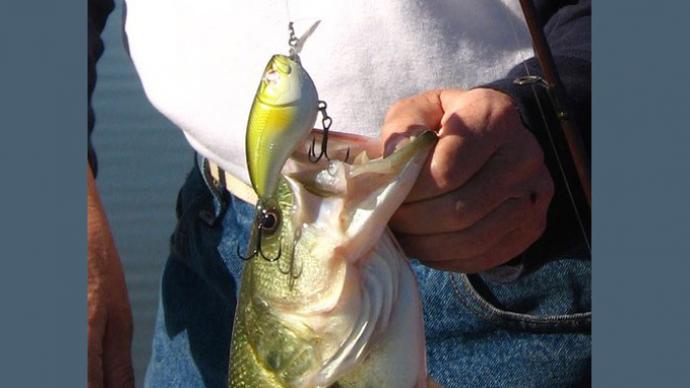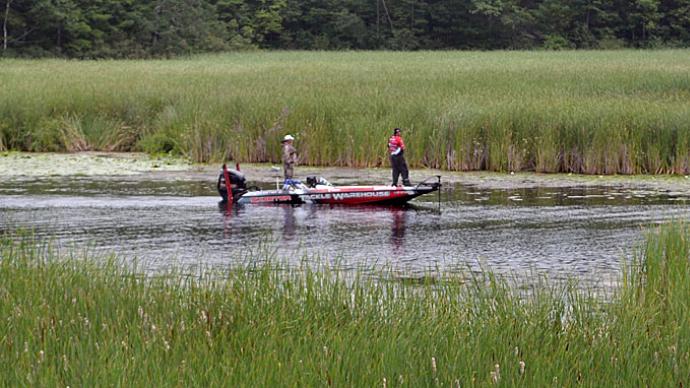What we know as of February, 2001:
Though it may have been one of the most frightening events in the history of the sport, it would appear that for some lakes at least, the main crisis has passed. Scientists have found that not all bass that contracted the virus died from it, and most of the ones carrying the disease appear normal. The sores and abrasions that are mistakenly identified as symptoms of the virus are actually secondary infections that appear once the immune system of the fish is compromised by the virus. In Texas, Sam Rayburn, Fork, Toledo Bend and several other lakes were affected by the virus. In Oklahoma lakes Tenkiller, Grand, Hudson, and Fort Gibson all had virus confirmed.
The same as in Texas, in Oklahoma it began in warmer months of the year. According to the Oklahoma Bass Tournaments 2000 Annual Report from the Oklahoma Department of Wildlife Conservation, Fisheries Division, provided by Gene Gilliland, the fish kills in Oklahoma were smaller than those in Texas and the lakes are rebounding. The virus has now caused fish kills in reservoirs in Louisiana and a number of other states. Most of the kills occurred in 1998 and 1999. Though the kills were large enough to upset anglers, fisheries managers indicate no permanent damage to fisheries. The worst part of the virus-related kills was the fact that the fish killed were for the most part large ones. Recruitment will take several years. Five Texas lakes suffered kills due to the virus. Now, in other states, other species of bass such as spotted and smallmouth have also been affected, though no kills were reported.
Warm weather and stress of several types are considered the trigger for the virus, which is present but does not always become deadly. Poor water quality from high temperatures and pollution or from frequent catch and release by anglers are still the main focus of applied stress. Though if catch and release plays a role at the lakes where kills occur, the question would be, why not at other lakes where the virus is present?
State and federal fisheries biologists and government and university research scientists are working on plans for monitoring investigation of the LMBV. But, they now don't believe the virus is as serious a threat as was thought in the beginning. Though no one in southeast Texas has doubts about the losses at Sam Rayburn, most lakes appear not to have been too severely affected.
You can visit the TPWD web site at www.tpwd.state.tx.us and go to the fish kills section of the site. It has all the information and phone numbers for officials handling fish kills and virus reports.
Anglers can help minimize the spread of LMBV virus by doing the following:
- Clean boats, trailers, and other equipment thoroughly between fishing trips to keep from transporting LMBV as well as other undesirable pathogens and organisms from one water body to another.
- Do not move fish or fish parts from one body of water to another. And do not release live bait into a fishery.
- Handle bass as quickly and gently a possible if you intend to release them.
- Stage tournaments during cooler weather, so fish caught will not be so stressed.
- Report dead or dying fish to state wildlife agencies.
- Volunteer to help agencies collect bass for LMBV monitoring where appropriate.
- Educate other anglers about LMBV.
It boils down to they know a lot less than they would like to about this virus, except that it isn't a threat to humans. No definite second kill at any of the lakes can be attributed to the LMBV, but scientists claim that more largemouth bass are killed by other known diseases each year than the LMBV has caused. Now it's a wait-and-see world for largemouth bass and for fisheries managers. We'll all be hoping for the best.



